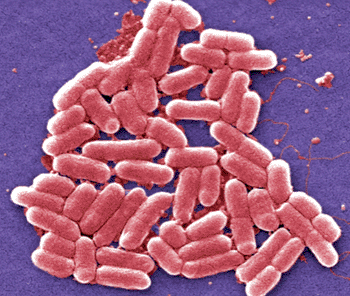Pioneering Method Rapidly Identifies Specific Pathogenic Strains
By LabMedica International staff writers
Posted on 25 Jul 2013
A statistical framework called Pathoscope has been created to identify pathogenic genetic sequences from infected tissue samples.Posted on 25 Jul 2013
This unique approach can accurately discriminate between closely related strains of the same species with little coverage of the pathogenic genome. The method also can determine the complete composition of known pathogenic and benign organisms in a biological sample.

Image: Scanning electron micrograph of Escherichia coli (Photo courtesy of Janice Haney Carr/CDC).
Collaborating scientists from Boston University School of Medicine (MA, USA) and George Washington University (GWU; Washington DC, USA) have described an accurate and efficient approach to analyze next-generation sequence data for species identification and strain attribution that capitalizes on a Bayesian statistical framework, implemented in the new software package Pathoscope v1.0. The approach accommodates information on sequence quality, mapping quality, and provides posterior probabilities of matches to a known database of reference genomes.
The Pathoscope method will be relevant in a broad range of scenarios. In hospitals, this sequencing method will allow for rapid screening of thousands of infectious pathogens simultaneously, while being sensitive enough to monitor disease outbreaks caused by specific pathogenic strains. The approach was demonstrated by application to next-generation DNA sequence data from a recent outbreak of Escherichia coli (O104:H4) in Europe. The outbreak resulted in a number of deaths that may have been prevented by an early identification of the affecting pathogen. No other method can accurately identify multiple species or substrains in such a direct and automatic way. Current methods, such as the standard polymerase chain reaction detection or microscope observation, are often imperfect and time-consuming.
Evan Johnson, PhD, the principal investigator, said, “Pathoscope is like completing a complex jigsaw puzzle. Instead of manually assembling the puzzle, which can take days or weeks of tedious effort, we use a statistical algorithm that can determine how the picture should look without actually putting it together. Our method can characterize a biological sample faster, more accurately and in a more automated fashion than any other approach out there.” The study was published on July 10, 2013, in the journal Genome Research.
Related Links:
Boston University School of Medicine
George Washington University














